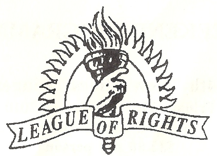The Imbalance in Interracial Crime and Media Coverage: From George Floyd to Iryna Zarutska, By Chris Knight (Florida)
In recent weeks, the tragic stabbing death of 23-year-old Ukrainian refugee Iryna Zarutska on a Charlotte, North Carolina, light rail train, has ignited discussions about interracial crime, media double standards, and societal responses to violence. Zarutska, who had fled war-torn Ukraine, was allegedly killed in an unprovoked attack by Decarlos Dejuan Brown Jr., a 34-year-old man with a history of violent offenses. This incident, captured on disturbing surveillance footage, has drawn comparisons to high-profile cases like the 2020 death of George Floyd, which sparked nationwide riots and billions in damage. Yet, while Floyd's killing dominated headlines and led to widespread unrest, Zarutska's murder has received comparatively muted coverage. I explore the statistical imbalances in Black-on-White crime, the societal fallout from the Floyd riots, and why cases like Zarutska's often fade into the background.
On August 22, 2025, Zarutska was riding the Charlotte Area Transit System's Blue Line, when Brown allegedly approached her from behind and stabbed her fatally. Surveillance video shows Brown, hooded and seemingly deliberate, carrying out the attack before fleeing. Brown, who has 14 prior convictions including assault and battery, was arrested shortly after. On September 9, 2025, the U.S. Department of Justice filed federal charges against him for committing an act causing death on mass transportation, potentially making him eligible for the death penalty. Charlotte officials have increased security on trains in response, but the case has prompted broader debates about recidivism, public safety, and racial dynamics in crime reporting.
Critics argue that the media's handling of Zarutska's death exemplifies a double standard: While her story has been covered locally and in some national outlets, it hasn't sparked the same level of outrage or protests as cases involving Black victims killed by White perpetrators. Social media users and commentators have highlighted this disparity, comparing it to the wall-to-wall coverage of George Floyd's death, which served a Leftist purpose of white racial guilt. North Carolina Governor Roy Cooper broke his silence on the matter, expressing heartbreak and calling for justice, but the story has not led to nationwide demonstrations or policy overhauls.
To understand the broader context, it's essential to examine FBI crime data on interracial homicides. African Americans comprise about 13% of the U.S. population, but account for roughly 50-56% of known homicide offenders in recent years, according to FBI Uniform Crime Reports. In 2019, the most recent year with detailed expanded homicide data, Black offenders were responsible for 2,574 murders of White victims, while White offenders committed 566 murders of Black victims, a ratio of approximately 4.5:1. Adjusting for population size (Whites are about five times more numerous than Blacks), the per capita Black-on-White homicide rate is significantly higher than the reverse.
These disparities persist over time. Bureau of Justice Statistics reports on homicide trends from 1980-2008 show similar patterns: Black-on-White homicides outnumbered White-on-Black by about 2:1 in raw numbers, with even greater imbalances per capita. More recent analyses, including extrapolations from available data, estimate that from 1960 to 2024, Black-on-White homicides could total 260,000-340,000, though these figures are rough and debated due to incomplete historical records. Factors like socioeconomic inequality, urban density, and systemic issues contribute to these rates, but the raw data underscores a clear imbalance often overlooked in public discourse.
It is worth noting that most homicides are intraracial: About 81% of White victims are killed by Whites, and 89% of Black victims by Blacks. However, the interracial gap, particularly in Black-on-White violence, produces perceptions of underreporting and unequal societal response.
Contrast this with the death of George Floyd on May 25, 2020, when Minneapolis police officer Derek Chauvin knelt on Floyd's neck for over nine minutes, leading to his death, allegedly, although the defence put the case it was a lethal dose of drugs in his system. The video sparked global outrage, Black Lives Matter protests, and widespread riots. From May to June 2020, unrest in cities like Minneapolis, Seattle, and New York resulted in an estimated $1-2 billion in insured property damage, the most expensive riots in U.S. history. In Minneapolis alone, damages exceeded $500-550 million, with over 1,500 locations affected by arson, looting, and vandalism. Nationwide, riots led to at least 25 deaths, thousands of arrests, and the destruction of businesses, police stations, and public monuments.
The Floyd case became a catalyst for discussions on police brutality and systemic racism, leading to reforms like body cameras and defunding initiatives in some cities. However, the violence, often detached from peaceful protests, included opportunistic looting, arson and assaults, exacerbating economic fallout in already struggling communities. Long-term costs, including lost businesses and declining property values, likely exceed insured figures by billions more.
Why did Floyd's death ignite "America burning," while Zarutska's stabbing garners limited attention? Media coverage plays a key role. Floyd's story dominated for months, with international protests and cultural shifts like NFL kneeling, and other examples of grovelling. In contrast, Zarutska's murder has been covered by outlets like the BBC, NYT, and CNN, but without the same intensity or calls for systemic change. Social media amplifies this: Accounts like End Wokeness have contrasted the "divide by zero" ratio of coverage, arguing racial bias in reporting. She was white and thus her death does not serve the globalist agenda.
This pattern isn't isolated. Studies show media often emphasises White-on-Black violence due to narratives around racism, while downplaying the reverse, despite statistical imbalances. Political factors compound this: Republicans criticise "weak-on-crime" policies, but rarely address racial dynamics explicitly, while some European figures, like AfD politicians, frame it as "anti-White racism," which it really is. In the U.S., fear of backlash stifles open dialogue.
The imbalances in interracial crime and media coverage highlight deeper societal fractures. Addressing root causes, poverty, education, criminal justice reform, requires acknowledging all victims, regardless of race. Zarutska's death, deserves justice and reflection, not sidelining. Until then, white lives really don't matter.
https://www.zerohedge.com/markets/our-nation-failed-iryna
https://www.zerohedge.com/news/2025-09-08/what-trump-should-do-about-charlotte


Comments